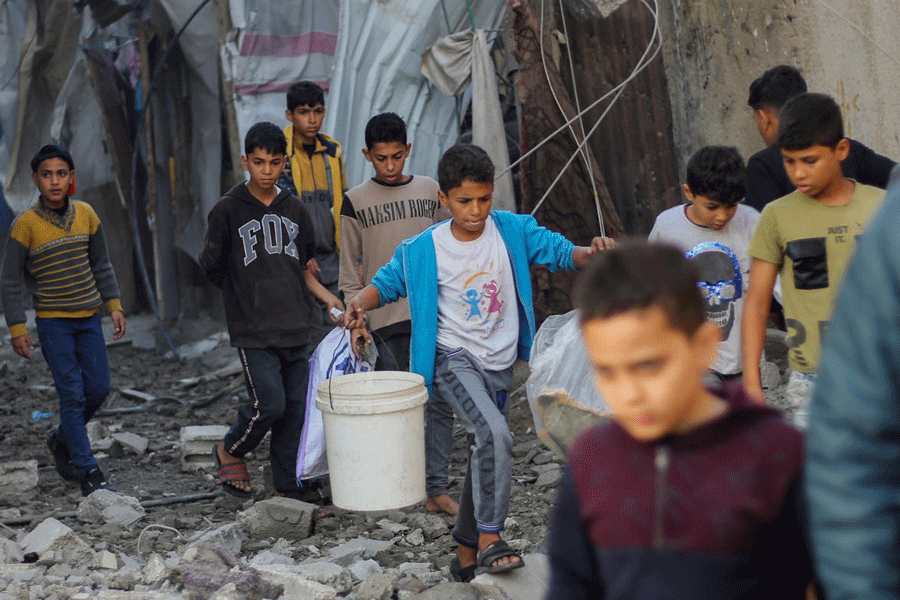House-to-house gunbattles were raging around the southern Gaza Strip city of Khan Younis, as Israeli forces and Hamas fighters clashed on Tuesday in some of the heaviest fighting of the two-month-old war, Israeli commanders said.
Major General Yaron Finkelman, head of Israel’s southern command, described the fighting as “the most intense day since the beginning of the ground operation”, which started in late October.
Hamas said it had killed 10 Israeli soldiers in the city and had injured several more, a claim that could not be immediately verified. Nir Dinar, a spokesperson for the Israeli military, said the army did not comment on casualties until after soldiers’ families were notified.
Hamas, the militant group that controls Gaza, also claimed in online posts that its fighters had totally or partially destroyed 24 Israeli military vehicles; that its snipers had shot at least six soldiers in the city; and that eight Israeli soldiers were injured with an anti-personnel bomb, though it did not say where.
None of Hamas’ claims could be immediately verified, but the pace of the posts seemed to confirm Israeli accounts of intense urban combat around Khan Younis, the largest city in the coastal enclave’s south.
Since a temporary truce collapsed last week, Israel has focused its campaign on southern Gaza, particularly in and around Khan Younis, where it says Hamas leaders and fighters are concentrated.
Hamas fighters are embedded in the strip’s densely packed buildings and hidden in an expansive network of underground tunnels, making close-quarters fighting unavoidable, Israeli officials said.
“Our forces find in nearly every building and house weapons and in many houses terrorists, and engage them in combat,” said Herzi Halevi, chief of the general staff of the Israeli military. “We understand that part of their method is the weapons left in the houses. A terrorist arrives in civilian clothing and conducts combat from there.”
Finkelman said Israeli forces were “in the heart of Khan Younis” and remained “in the heart of Jabalia” and “in the heart of Shuja’iyya”, two residential areas in northern Gaza, which has been largely depopulated after weeks of intense airstrikes and instructions from Israel for Palestinians to leave the area.
Hundreds of thousands of civilians fled to Khan Younis and other areas of southern Gaza after Israel ordered them to leave northern Gaza in the first month of the war.
But in recent days, Israel has issued new evacuation orders for large areas of southern Gaza. Human rights groups and aid agencies say civilians are now being pushed into a patchwork of smaller and smaller areas with no guarantee of safety.
On Tuesday, Reuters interviewed Ibrahim Esbeitan, father of an injured 2-month-old baby, Adnan, who was born on the second day of the war. Esbeitan was seeking medical care for the baby in a crowded hospital in Khan Younis.
“They told us to leave Gaza City, there’s a war in Gaza, so we left and came here to the south just like they asked,” Esbeitan said, gesturing at his infant son on a gurney. “But this is what we’ve found in the south. What can we do?”
Palestinian medics said hospitals were overflowing with dead and wounded civilians, many of them women and children, and supplies were running out. The Washington-based Institute for the Study of War said Hamas fighters were using improvised explosive devices and anti-personnel mines in a shift of tactics as the fighting moved to close ground combat.
New York Times News Service and Reuters










